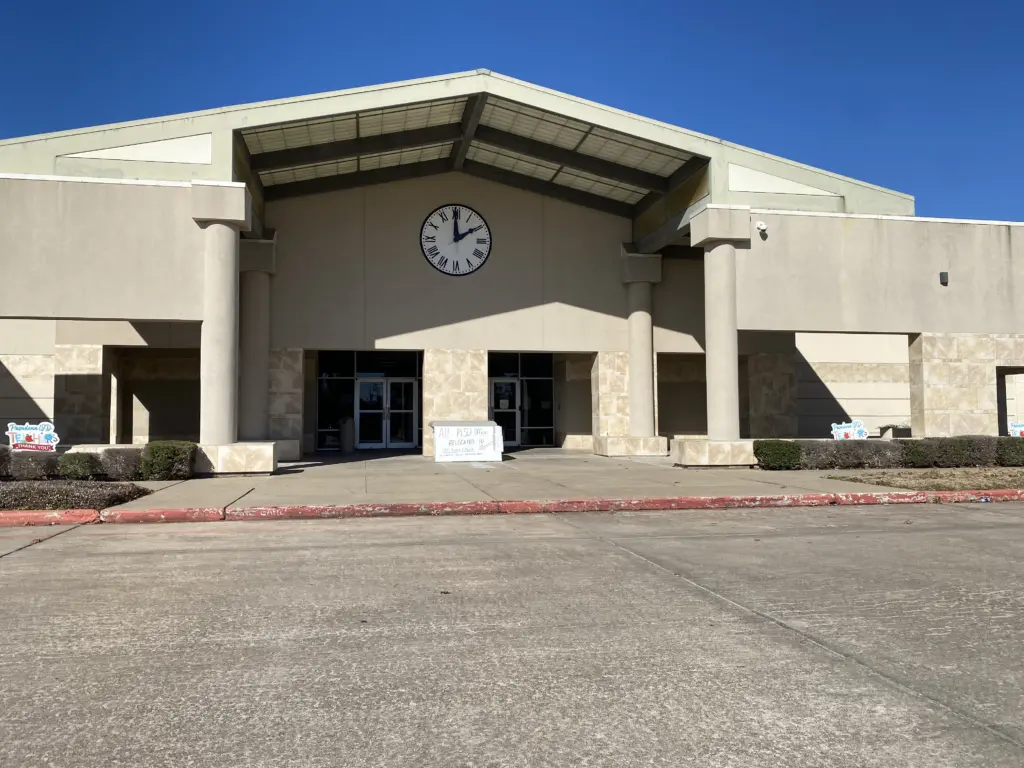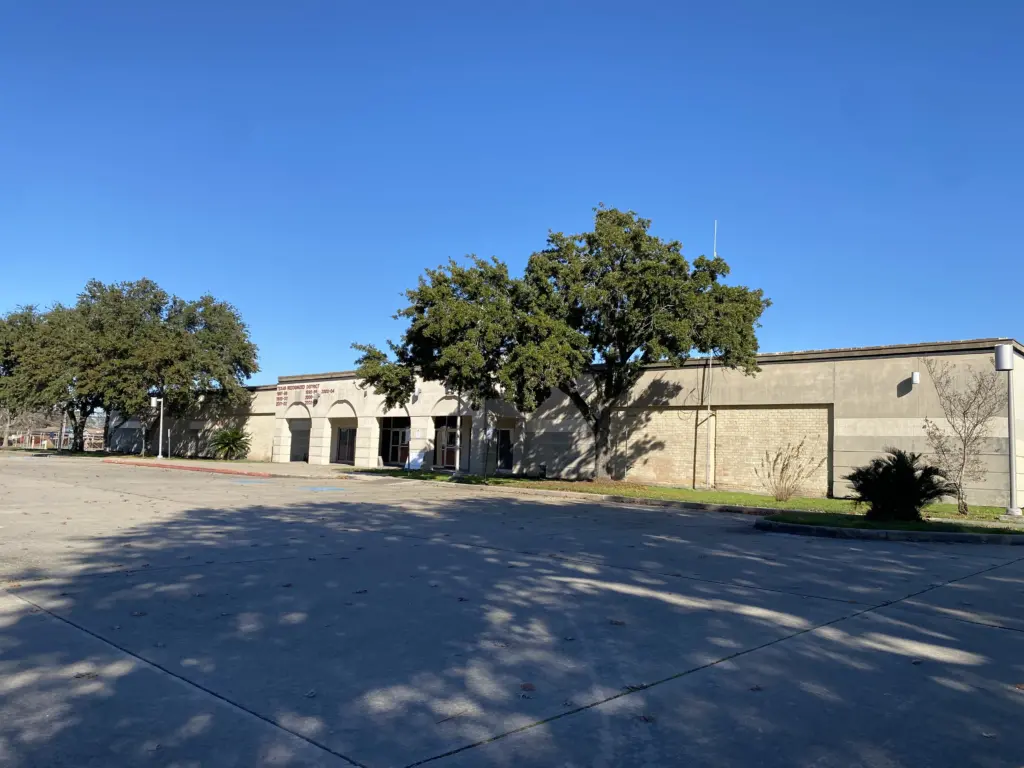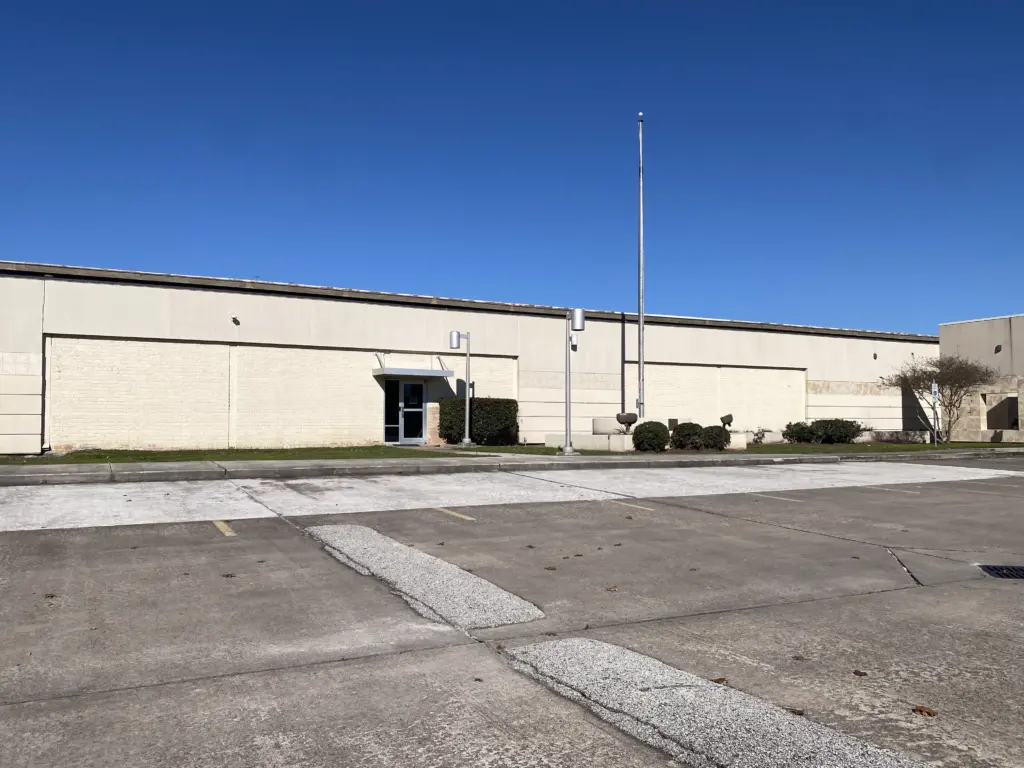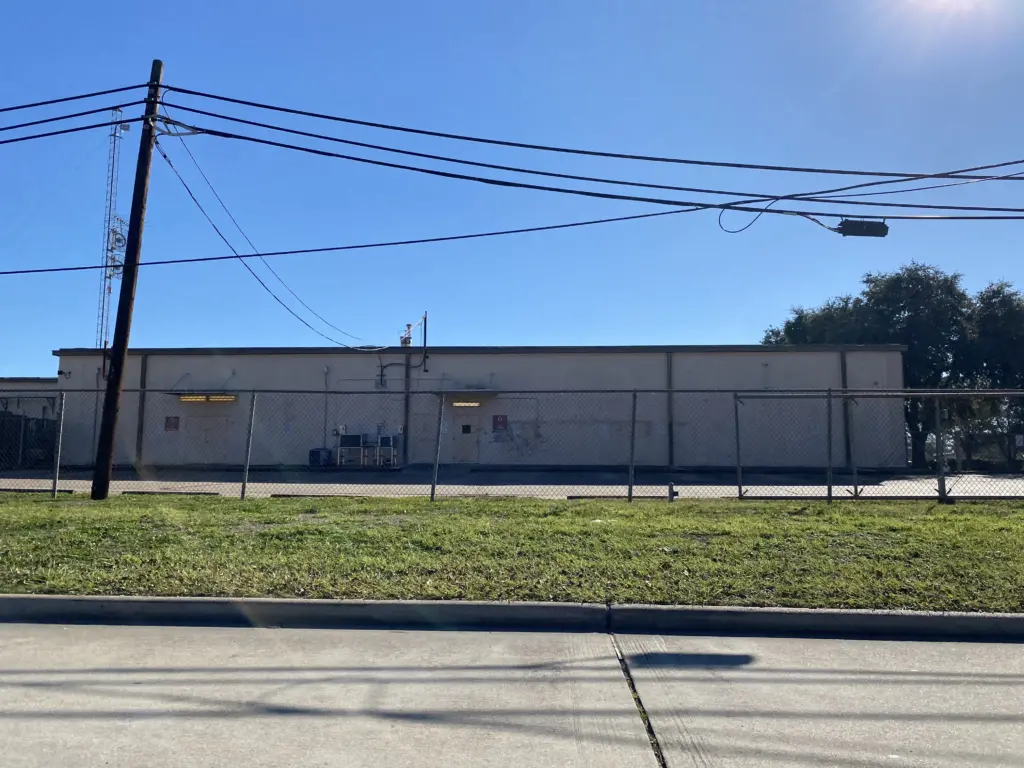Strawberry Mall was a short-lived attempt at a mall for Northern Pasadena. South Pasadena received the area’s first mall, Pasadena Plaza, in 1959. A smaller mall compared to nearby Gulfgate, Pasadena Plaza was a considerable distance from those on the North side of the city. In response to this, in a tale that has been lost to time, work began to redevelop a neighborhood in Northern Pasadena into a world-class mall. The first step was to sign on Foley’s and begin demolishing homes. By 1962, enough work had been done that Foley’s would start building, and the mall was said to be underway as well. By the end of 1962, the Foley’s Pasadena branch would open, but work on the mall had yet to commence. From what I can tell, work on the mall may have stopped after some residents resisted the buyout. However, it seems the story’s details have been lost to time. From this point, Pasadena’s mall story becomes a bit more complicated. It was obvious the mall had support from the city, as they had a hand in clearing out some of the old neighborhood, but it was unclear what kind of time frame the mall would actually be built. With shoppers still needing to head South for anything that Foley’s didn’t carry, property developers began looking to build a new mall for North Pasadena. Unable to use the land tied up in the future Pasadena Town Square Mall site, developers would have to look elsewhere in town. To find this new plot of land, developers would follow Strawberry Road, which looked like it was going to be the Eastern border of the mall at that point, South for a few blocks. The developers would land on a 10-acre site at the corner of Strawberry and Pasadena Ave. It was far too small for a conventional mall, but with the knowledge that Pasadena Town Square would eventually be constructed on a much larger plot, the developers of the Strawberry Mall hedged their bets on a small local mall.

Construction on the Strawberry Mall started in late 1967. The main draw of the mall was to be Ivy’s, a local department store which would have likely ended up next to Foley’s otherwise. Once Ivy was on board, the developers courted Kress and A&P to take to mini anchor spots in the building. The stores along the mall corridor were quite typical for a late 60s mini-mall. Options included Vincent’s Beauty Shop, Hyde’s Children’s Clothing, Jac-Ques’ Sportswear, Ye Olde Shoppe (A Hallmark distributor), Boyd’s Shoes, and Traynor’s Menswear. One final junior anchor would take a section along the mall’s north side, Ivy’s Department Store. In the few years it had taken to purchase and develop this plot of land, work once again started up at the future Pasadena Town Square. In reality, what appears to have happened was a few holdouts in the old neighborhood, who had now lived in a semi-demolished wasteland for nearly ten years, took a higher buyout offer, leaving nearly all of the land open for development. While nothing would happen to the mall for nearly ten more years, the developers of Strawberry Mall took this seriously and sped up work on their mall. In fact, all the stores listed above were invited to open months prior to the official grand opening, which finally occurred in October 1968. After the grand opening, a few other stores would open, including a Rexall Drug and a tape store.

From day one, the Strawberry Mall was always a bit “dinky.” It was tiny and just above a sidewalk mall in terms of offerings. After opening, the mall would fill out a bit, hitting an all-time high of 14 tenants in 1970. However, this would not last, and almost as soon as they had hit this high, stores began to close. Houston was a tough market at this time, and most of the fledging shops that moved into the Strawberry Mall had come from more forgiving shopping center spaces. In 1970, the majority of the smaller boutiques that left would end up with replacements in a similar vein, and all the larger stores continued to operate without interruption. While this mall is obviously never going to take off like the Galleria, it would probably have a good run over the next few years, or at least that’s how it seemed. Broader economic conditions in the United States led to a decline in local oil production. Pasadena would be one of the areas most directly and immediately hit by this, and in 1971, shops in the Strawberry Mall would start closing for good. A&P closed their grocery store, leaving an anchor-sized space on one side of the mall. The A&P had closed as part of a larger chain restructuring that almost saw them exit Houston the same year. As a result, the space would be leased out on a temporary basis. The first new tenant was an auction company that used the space to auction off fixtures from the Shamrock-Hilton Hotel. After A&P closed, many boutiques began to flee. By the end of the year, Kress had left, and most of the remaining boutiques would close or, in the case of more successful stores, actually leave the mall.

The real kicker to the mall seems to have been the death of Ivy’s. From my best approximation, Ivy’s outlasted Kress and A&P by a few months. There’s also a chance that Ivy’s may have been a driving force behind building the mall in the first place. However, with the building almost completely empty by 1972, the owners needed a way to make income from the mall, so they began seeking non-traditional tenants. While the mall did go the obvious route of leasing some rooms as office space, they also made an attempt to sign tenants who would have trouble in a shopping center. One example of this was the Sam Andy Family Food Reserve. This company offered what we would refer to today as prepper supplies. Freeze-dried foods, MREs, composting toilets, dehydrated water, everything one might need to survive the apocalypse, all at the Strawberry Mall! Unfortunately for the owner of Sam Andy, the apocalypse didn’t end up happening, and they left the mall shortly after. The mall would sit nearly empty, with only a small portion leased as offices essentially until the end of 1974. While the mall was failing, a plan for replacement was brewing. During the past few years, Pasadena ISD, which had exploded in size during the 60s and was on the rise again post-oil crisis, had a need for space. While the district had built new schools, the size of its administration office had also increased, and it needed more room for things like A/V services, which was a relatively new department at the time. The district lacked the budget to build a new building, and with the mall sitting there empty, the decision was made to lease a portion of the Strawberry Mall.

Initially intended as a stopgap for budget issues, PISD quickly increased its space at Strawberry Mall. At this point, the mall was still technically open and had some seasonal retail, but nothing permanent. Realizing that the developer was willing to lease the mall for cheap, other governmental tenants began to move in, including a driver’s license office. While the corridors were left open, PISD also began work on reorienting some of the store space to better fit their needs. By 1975, the district was leasing over 15k sqft of the mall for the low price of $1500/month. The space was used as a library processing center and A/V support, and since it was set up for public access, it also had a district tax office. The lease was for 10 years, and they could extend it for another 10 years. By 1977, Harris County had lept on the site, opening at 12k Sqft. medical clinic in the former mall. Most of the spaces were ex-anchor spots, and as mentioned previously, there was still a handful of offices/nontraditional retail leasing space there. In 1982, with the decision date for their 10-year extension quickly approaching, PISD had to make a choice about the mall. During the time PISD had moved into the mall, no work had been made on a new administration building, and with financing becoming a bigger issue, it couldn’t easily construct a new facility. The discussion of buying the mall popped up. With the entire mall under their control, PISD could likely move their administration offices into the old mall. However, the mall came with commitments, specifically, the remaining mall tenants, some of which had leases that lasted for years. Faced with the option to either leave the mall or become its owner, the district opted for the latter.

When PISD took ownership of the Strawberry Mall, they had seven tenants, including the district offices. The other residents of the mall were a DPS Drivers License Office, the aforementioned county clinic, Texas Parks & Wildlife had a small office, and it was also the HQ of Pasadena Cablevision. Finally, the last two retail tenants are a small recording studio and a gym named Fun & Fitness. For the next five years, these offices and shops would close, with PISD slowly taking over each closed space, and by 1985, the mall was all theirs. The plan from the date of purchase had been that PISD would renovate the mall into a new complete administration building, which would cost around $5 Million. However, the financial outlook of PISD was still too negative to finance this type of construction, so the budget for the remodels had to be cut back twice, all the way down to $1.5 Million. The main plans called for a central HVAC system to replace the individual air conditioning units the stores had and some updates to the wiring to serve their needs better. The mall corridors and exterior would stay intact, but the mall would be closed to the public from 1986 on. The plan was to eventually demolish the mall interior and replace it with office space. However, from what I can tell, this construction was again largely deferred, with work taking place on stage over the next 30 years. PISD would eventually move all operations to the former Strawberry Mall, officially rechristening it as their administration building, a job it would hold until 2024 when a replacement was finally constructed. As of present, the facility appears to be a satellite for the new administration building, serving a purpose similar to what the district initially needed it for.

We moved to the area in 1977, and I remember that it had a rather large Nautilus Fitness Center in it, along with the DPS office.